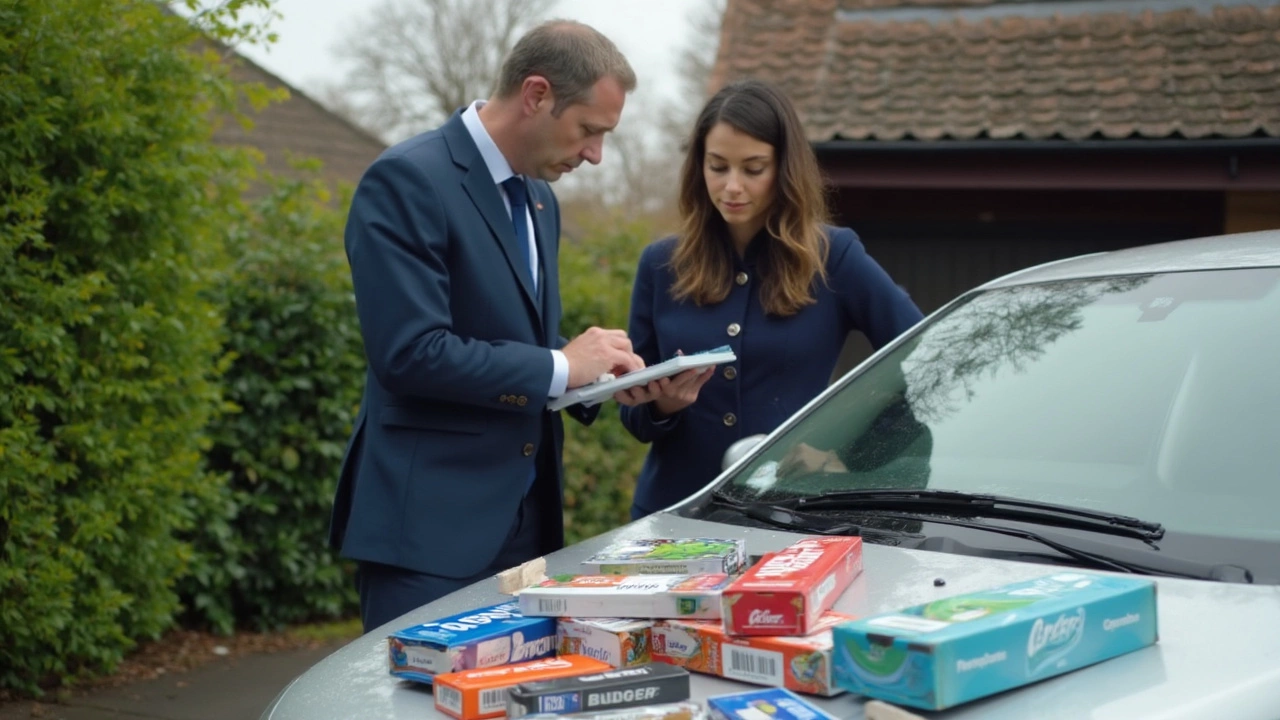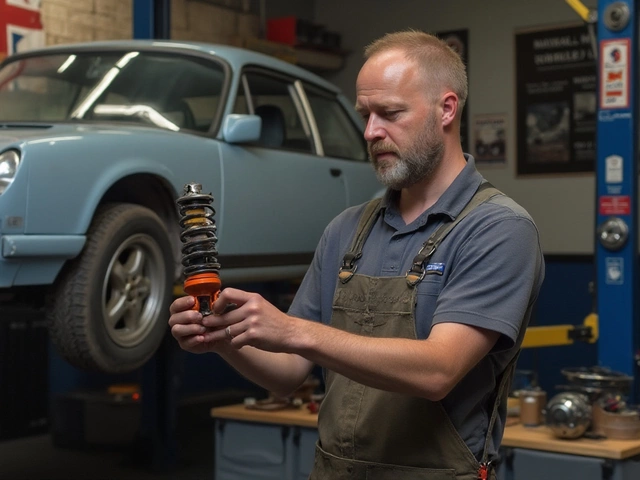Windshield wipers probably aren’t the first thing you think of when it comes to car costs, but try driving through a rainstorm with bad ones—suddenly, they're everything. Here’s the weird part: walk into an auto store and you’ll see wiper blades priced anywhere from a couple of bucks to almost fifty dollars a pair. Sounds nuts, right? So what’s driving all that price difference, and how much should you actually shell out?
The truth is, price doesn’t always mean better performance. Fancy packaging and big-brand names can drive up the cost, but that doesn’t guarantee clearer vision during a downpour. What really matters is the fit for your car, the quality of the rubber, and how often the weather puts them to the test. Junk wipers can leave streaks or even scratch your glass. But that $40 blade promising “aerodynamic silicone advancement”? Don’t get hooked by marketing talk—look for real features and proven durability.
- What You Really Pay For
- How Much Is Too Much?
- When to Replace Wiper Blades
- Saving Money Without Losing Quality
What You Really Pay For
When you grab a pack of windshield wipers off the shelf, the first thing hitting your wallet is the brand. Big names like Bosch, Rain-X, and Michelin tend to cost more just because of the sticker—and yes, you’re paying for some research and possibly better materials, but marketing drives up the price too. It’s like sneakers: sometimes you’re buying hype as much as hardware.
Then there’s the actual hardware. The main parts are:
- Wiper blades: The rubber strip that sweeps water off your windshield. Look for high-quality rubber or silicone; those last longer and don’t get brittle as fast.
- Frame or beam: Cheap blades use thin metal frames that can bend easily. Premium ones often use beam-style frames (no exposed metal), which hug the glass better, especially at highway speeds.
- Coatings: Some pricier wipers come with a special coating that claims to repel water for longer. You might see “graphite” or “rain-repellent” right there on the box. Sometimes that does help with smoother wipes, especially right after you install them, but it wears off faster than you’d expect—usually within a couple of months.
Another piece of the price is packaging. There are wipers packed for “all-weather” or “winter” use, often costing more. Those winter blades work by adding a rubber shell to keep snow from clogging them. If you’re in Minnesota, great. If you’re in Arizona, don’t bother spending extra.
| Basic Blade | Premium Blade |
|---|---|
| $8–$16 (pair) | $28–$45 (pair) |
| Standard rubber, metal frame | Silicone/rubber blend, beam frame, special coatings |
| 6–10 months lifetime | 12–18 months lifetime |
Bottom line: you’re mostly paying for lifespan, fit, and sometimes a smoother wipe. If you just want the window clean and don’t face crazy weather, don’t let marketing push you into spending on features you’ll never use. Watch out for windshield wipers that seem too cheap—those usually miss the mark on both fit and durability.
How Much Is Too Much?
Walk into any car parts store and there’s a mind-boggling range in the price for windshield wipers. You’ll find basic rubber blades for $7‒$12 each and high-end “premium” blades that can hit $20–$30 each. So how do you decide what’s actually worth your money?
Most drivers can skip the super pricey options. Independent tests from 2024—like the well-known Consumer Reports study—showed that mid-range blades, costing around $14–$18 each, often performed just as well and sometimes even lasted longer than the expensive brands. The main difference? Some high-end blades use silicone instead of regular rubber, which can handle harsh sunlight and freezing temps better. But unless you’re driving in brutal weather or want the absolute quietest wipe, that extra $10 usually isn’t buying you much more than nice packaging or a brand logo.
A lot of auto shops push ‘professional installation’, which can double or even triple your cost. Here’s some real talk: most cars let you snap new wipers on yourself with zero tools in less than five minutes. If you’re willing to avoid that service charge, that’s instant savings.
To make things clearer, here’s a quick look at what people actually pay across the U.S. as of 2025:
| Type | Average Cost (each) | Features |
|---|---|---|
| Basic Rubber Blade | $8 | No frills, gets the job done |
| Mid-Range Beam Blade | $16 | Better fit, good performance in rain |
| Silicone/High-End Blade | $28 | Longer lasting, quieter, fancy tech |
The bottom line: Unless you’re driving in extreme weather, there’s no need to cough up $30 for a blade. A solid mid-range wiper is all most people need—and your wallet will thank you.

When to Replace Wiper Blades
If you wait until your wipers are leaving giant streaks, you’ve already missed the sweet spot. Most experts recommend changing wiper blades every six to twelve months, but it all depends on how much action they see—if you park outside all year or drive through a lot of dust and dirt, you might need fresh blades sooner. Sun and heat break down the rubber fast, especially if you’re living somewhere warm like Arizona or Texas.
Forget the old coin test; your eyes and ears will tell you what you need to know. Look for these signs:
- They leave streaks, skips, or smears on your windshield—especially right in your line of sight.
- You hear chattering, squeaking, or scraping when they’re moving.
- The rubber looks cracked, split, or is peeling away from the blade.
- Parts of the blade aren’t even touching the glass anymore.
According to a study by AAA, almost one in three vehicles had worn-out or ineffective windshield wipers during roadside checks. That’s a lot of drivers squinting through a blurry mess when it rains. New blades are cheap insurance for a clear view.
Don’t forget: your rear window wiper needs love too if you drive a hatchback or SUV. And if you live somewhere harsh—think icy winters or scorching summers—put a reminder on your phone or calendar to check those blades at least every spring and fall. A quick check when you clean your car can save you major frustration later.
Saving Money Without Losing Quality
Buying the cheapest wiper blades you see isn’t always a win, but paying a premium every time doesn’t make sense either. The sweet spot is getting blades that do the job well without the fancy price tag. Most cars work perfectly fine with standard rubber blades, which usually cost between $10 and $20 each at big retailers. Unless you’re living under constant snow or monsoon-level rains, you probably don’t need the most expensive "beam-style" or "silicone hybrid" options.
One smart move is to skip dealership wipers and branded big-name blades. Generic or store brands use the same basic materials, and sometimes are even made in the same factories as the pricier brands. Just make sure the size matches your car’s manual—fit is everything. Also, double-check if your car has an odd attachment; some newer models require a specific locking clip. Auto parts stores usually have a guide right at the display, making it easy to cross-reference your model.
Want your blades to last longer and keep you from buying replacements too often? Try these tips:
- Wipe the rubber edge with a damp paper towel every couple of weeks. This gets rid of dirt and bug residue that can wreck the blade fast.
- Keep your windshield clean—grit and sand shorten blade life fast.
- Don’t run your wipers on a dry windshield.
- In winter, lift the blades when parked to keep them from freezing to the glass.
Let’s put some actual prices side by side. Here’s a quick comparison of popular options as of 2025:
| Type | Price Range (Each) | Typical Lifespan | Main Drawbacks |
|---|---|---|---|
| Standard Rubber | $10-$20 | 6-12 months | Tough winters wear them out faster |
| Premium Beam | $25-$40 | 12-18 months | Higher upfront cost, sometimes little gain |
| Dealership OEM | $30-$50 | Varies | Often just rebranded standard blades |
The bottom line: Find the right fit and balance quality with price. You don’t need to overspend to get solid, streak-free sweeps. Buy what works for your driving, and don’t fall for slick marketing. When it comes to windshield wipers, a bit of research saves cash without sacrificing safety.






